Laura Knight in 5 Paintings: Capturing the Quotidian
An official war artist and the first woman to be made a dame of the British Empire, Laura Knight reached the top of her profession with her...
Natalia Iacobelli 2 January 2025
A true femme fatale in the art world, Amélie Beaury-Saurel was a French painter in the 19th century and a prominent member of Académie Julian. At the time, many female artists struggled to gain exposure and were not permitted to study at the École des Beaux-Arts in Paris, one of the most prestigious art schools. Thus throughout her life, to rebel against societal norms, Beaury-Saurel focused most of her work on powerful women subjects and the feminist cause.
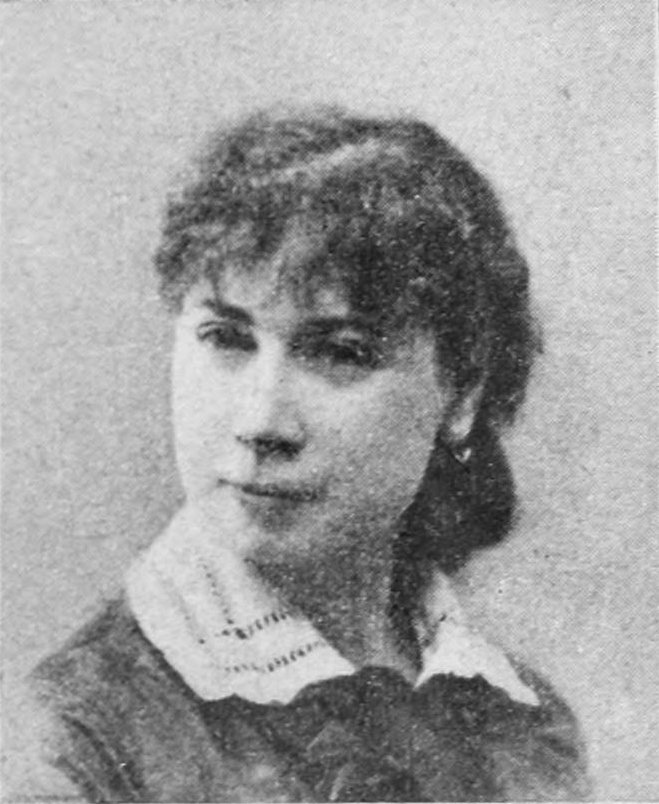
Amélie Beaury-Saurel (1849-1924) was a French painter, born in Barcelona. In 1874, she joined Académie Julian; a private art school that prepared students for the art school admissions exams and offered independent courses for foreign students and women, who were not allowed to study at the École des Beaux-Arts at the time. Motivated to achieve a career as a successful portraitist, Beaury-Saurel paid for her training by helping out with the administrative and financial duties of the Académie.
In 1880, she was considered one of the most important artists of Salon de Paris, the most significant exhibition of the Académie des Beaux-Arts in Paris, with her first appearance just six years earlier. Most of her work was dedicated to women and the feminist cause. Finally, after her husband’s death in 1907, Rodolphe Julian, who was the founder and director of the Académie, she took his position as director of the Académie Julian.
Now, let’s take a look at some of the most notable works by Amélie Beaury-Saurel:
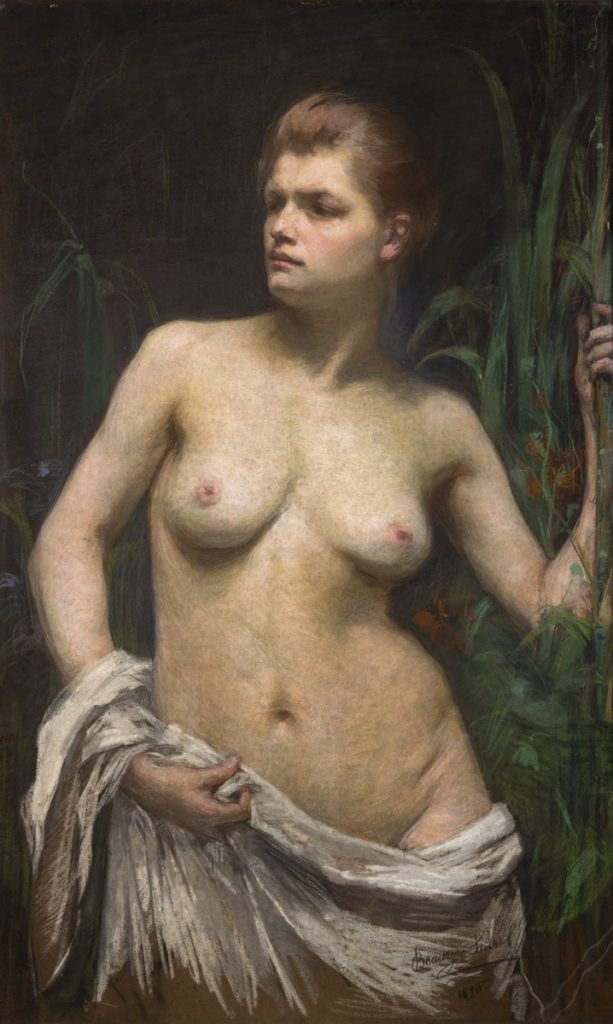
The courageous title for the artwork, Académie, is referring to the art academy which lacked female representation at the time. Thus it transmits a powerful message to the audience: Amélie Beaury-Saurel didn’t adhere to or wish to conform to the social norms in the arts sphere.
In her marvelous drawing, Amélie Beaury-Saurel plays with textures and lighting in order to portray the exquisite, firm model. Holding onto some upright stalks of bamboo, the woman stares to her side proudly. Furthermore, by deciding against clothing the model, Beaury-Saurel emphasizes, through the nude pose of the model, the tough and rebellious attitude women embraced as artists.
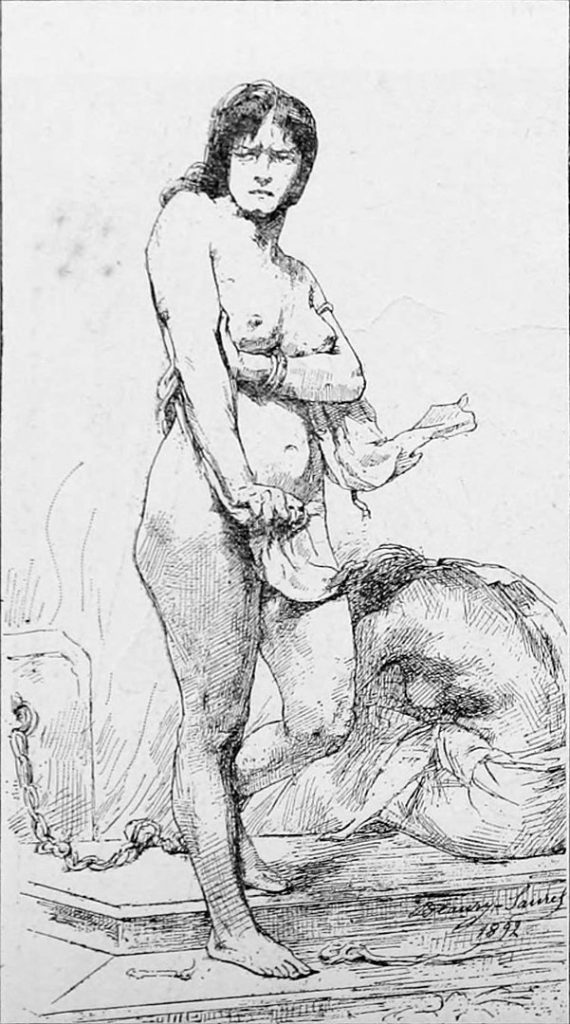
Through her expressive sketch, Amélie Beaury-Saurel may be urging female artists to adopt a fearless stance against the unwelcoming harsh world and not let themselves be defeated in the face of the obstacles they will encounter.
Deux vaincues (Two Defeated Women) depicts two nude women chained to the wall. Although both characters face similar challenges, a clashing difference can be sensed in their frame of mind; one has her back bent in a defeated pose, while the other stands upright, unapologetically, and throws an upsetting gaze in the distance. The viewer might wonder to whom is the distressed stare addressed… Can it be to her detainer?
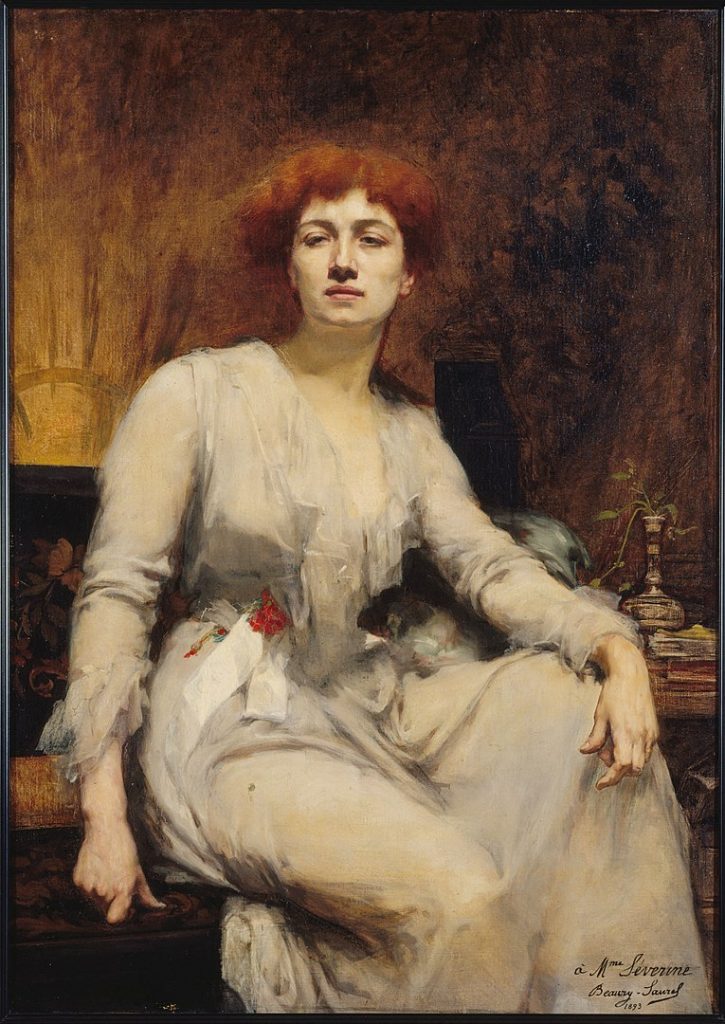
Caroline Rémy de Guebhard (1855-1929) was a French journalist known for her nonconformist anarchist, socialist, communist, and feminist opinions. Often times she used the pen name “Séverine.” You might recognize her from one of Pierre-Auguste Renoir’s (1841-1919) portraits, entitled Caroline Rémy from c. 1885. Renoir was a French painter who set the scene for the Impressionist painting movement.
Again, Amélie Beaury-Saurel surprises through her spectacular free, and playful but, at the same time, decisive and compelling painting technique. One detail pops up against Séverine’s white delicate dress: the vibrant red flower at her sash that symbolizes her leftist political views. A strong aura surrounds the unmovable femme fatale who gazes fiercely. Beaury-Saurel’s talent as a portraitist and painter transpires through the fine details encountered throughout the entire canvas. Consider the exceptional attention the artist dedicated to accurately depicting Séverine’s hands.
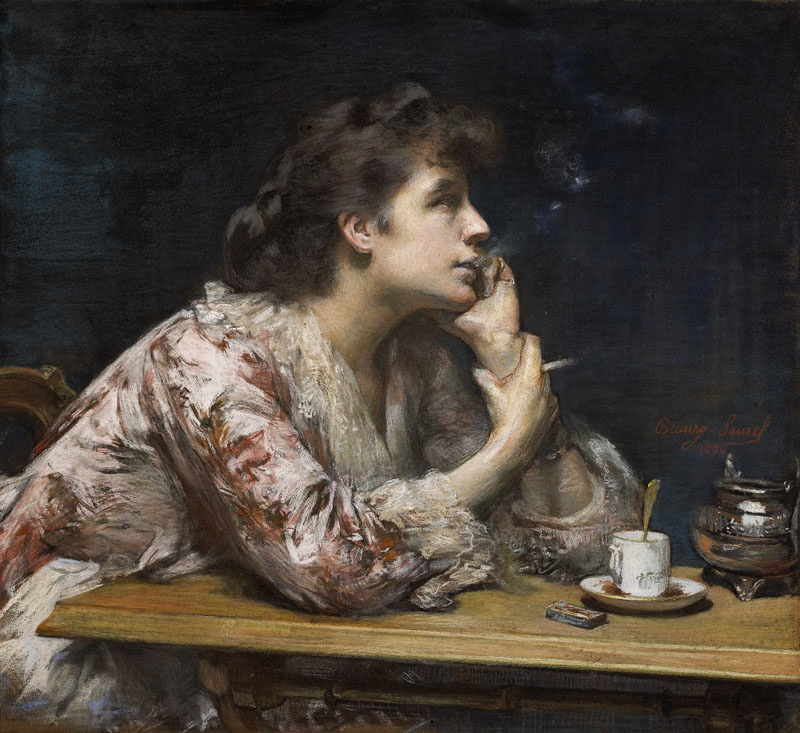
Dans le blue (Into the Blue) depicts a young woman carelessly smoking a cigarette in the midst of pleasant reverie. Even though some might argue that the model in this artwork resembles the artist, Amélie Beaury-Saurel, it is hard to determine whether this is a self-portrait or not. The simplicity of the authentic moment captured with exquisite brush strokes expresses the feminine beauty in the daily activities women engage in, unaware of their grace and delicacy.
Blue is a rather predominant color in the tableau, especially in the background. Additionally, it frames the scene and gives life to the character through the impressive contrast it generates. It is not clear whether the woman is in the intimacy of her own space, such as her kitchen, or in public, for example at a cafe. Nevertheless, the scene is accompanied by the artist’s unique influence upon the subject.
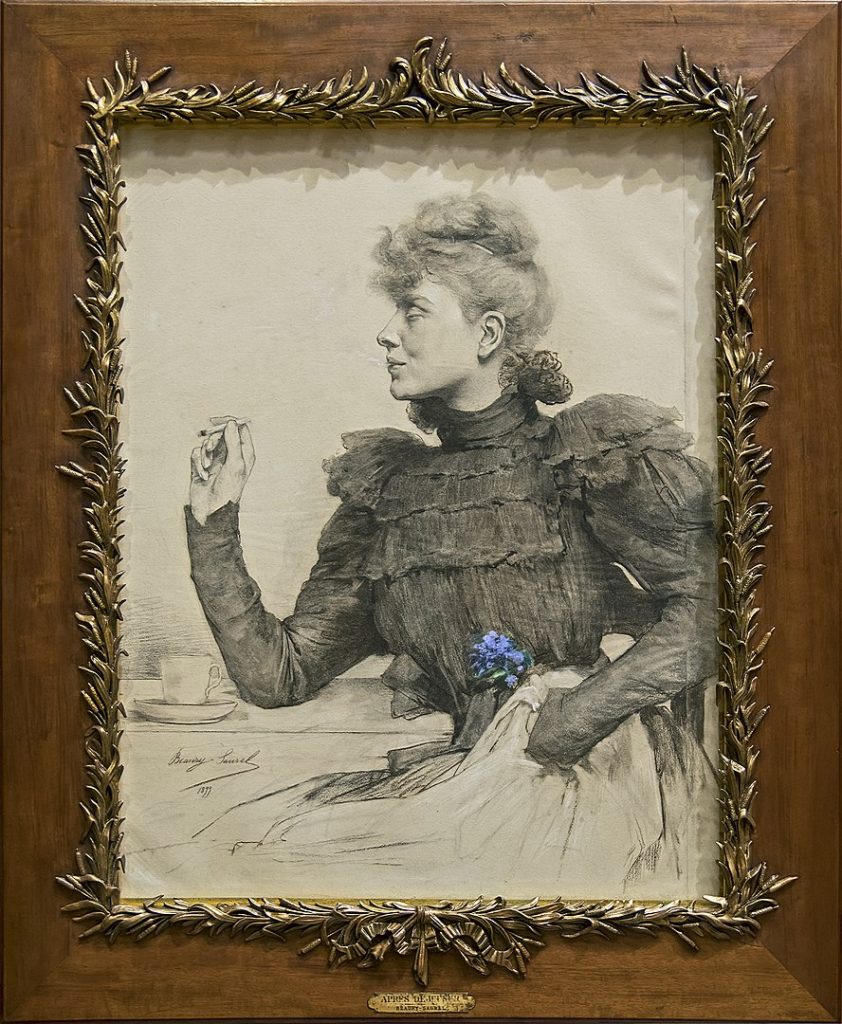
Similar to Dans le bleu, Après déjeuner (After Lunch) illustrates a woman enjoying her cigarette at the table after her meal. Her hand sits decisively on her hip while she looks somewhere far away. A private moment in the life of a beautiful woman, this drawing conveys the memorable unpretentiousness of everyday activities.
Incidentally, the artist plays once more with the color blue, but in an even more inventive manner: yet again, a flower placed at the sash of the character sparkles brightly in contrast to the monochrome and serious composition. In her works, Amélie Beaury-Saurel gives a lot of importance to the attitude of her subjects who emanate a sense of respect and feminine strength while delicacy is highlighted by their striking attires.
DailyArt Magazine needs your support. Every contribution, however big or small, is very valuable for our future. Thanks to it, we will be able to sustain and grow the Magazine. Thank you for your help!